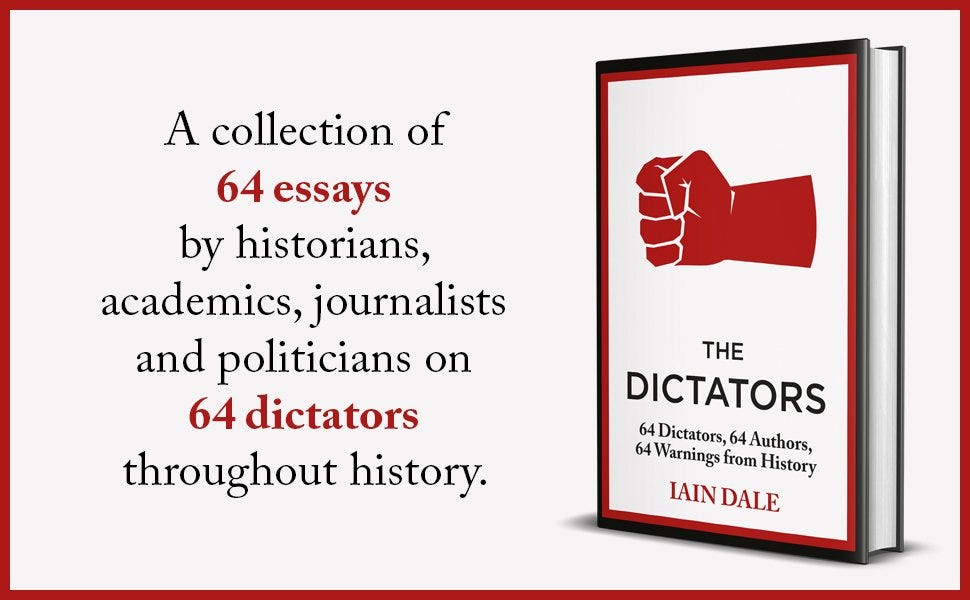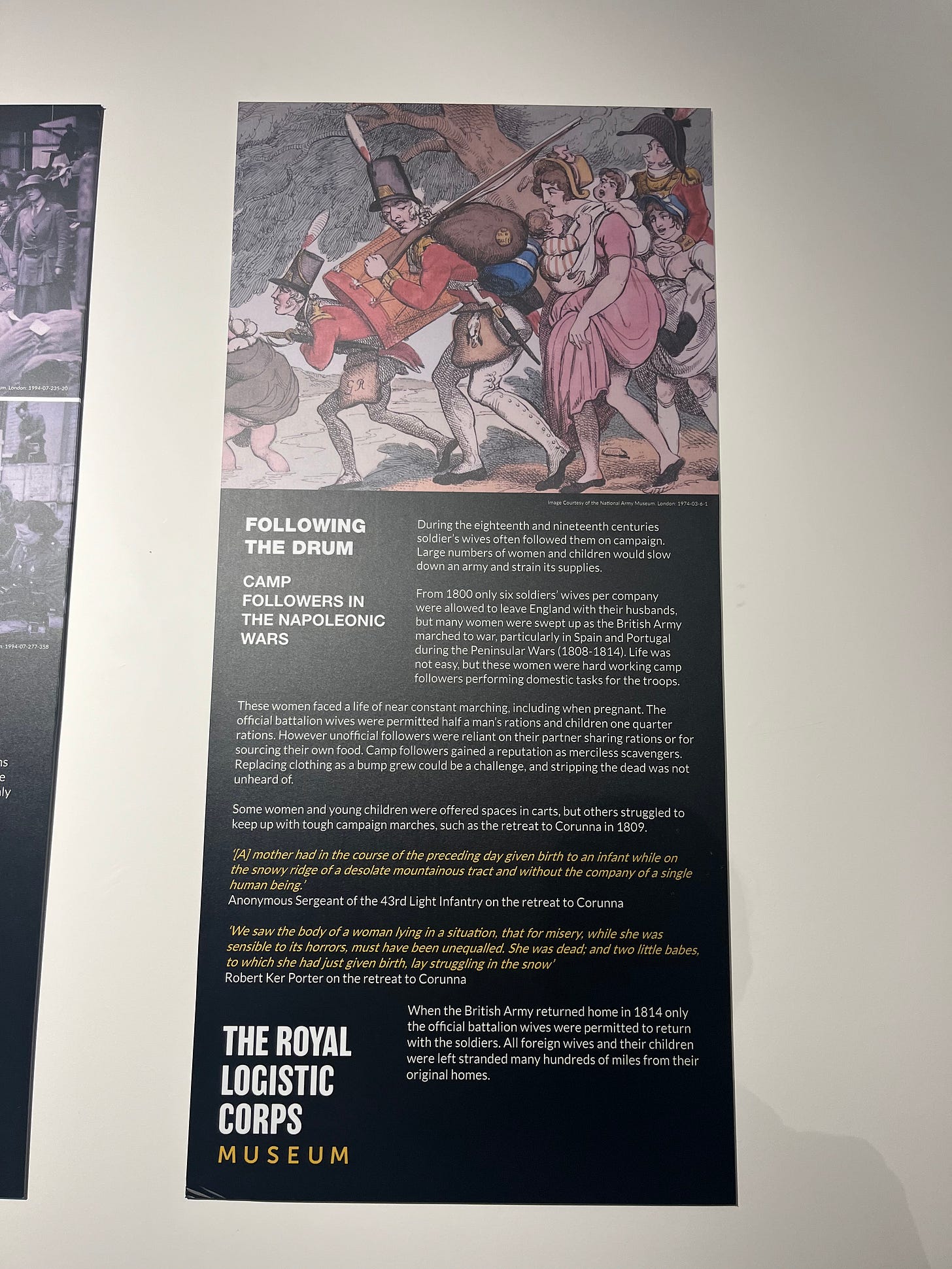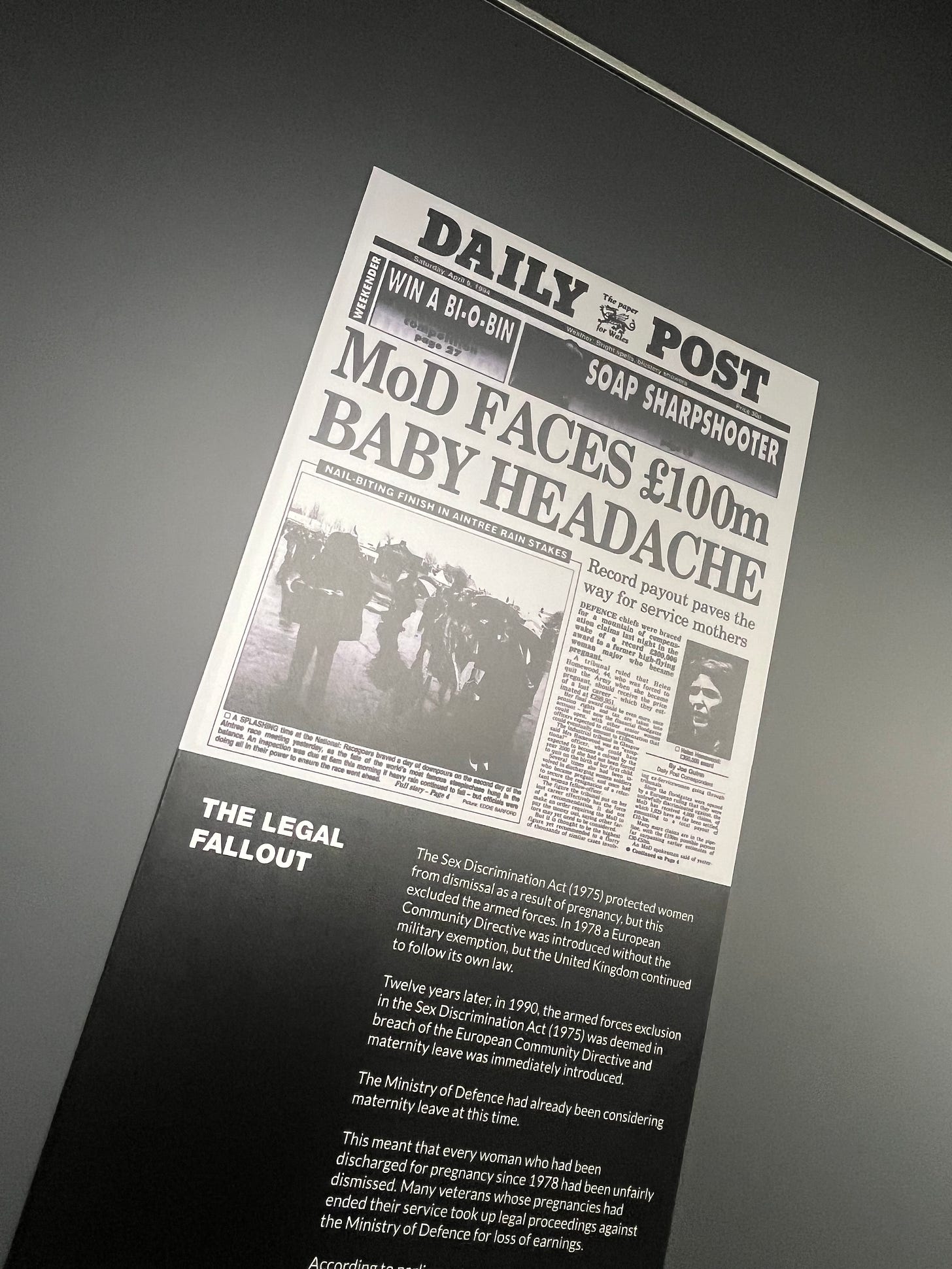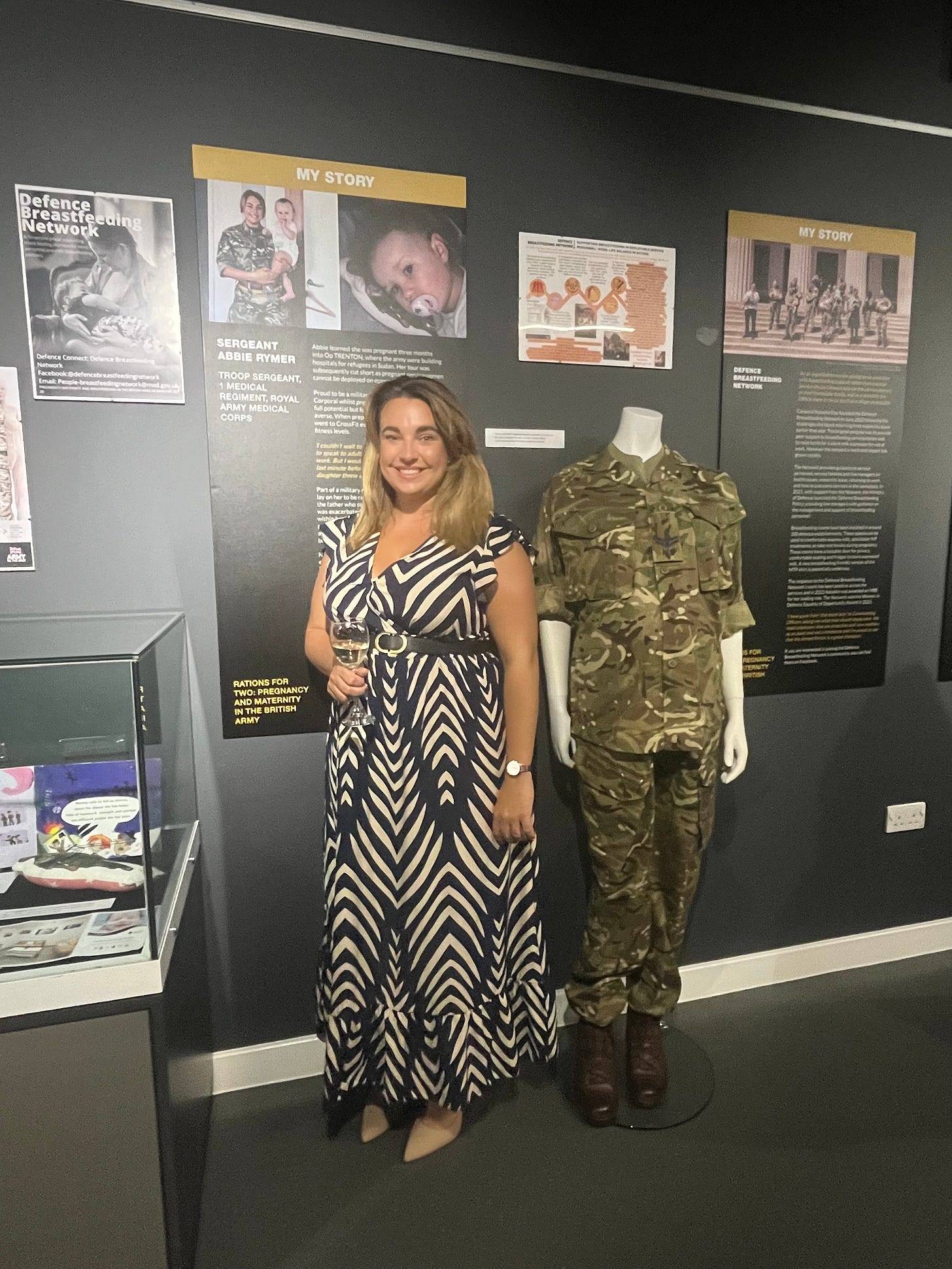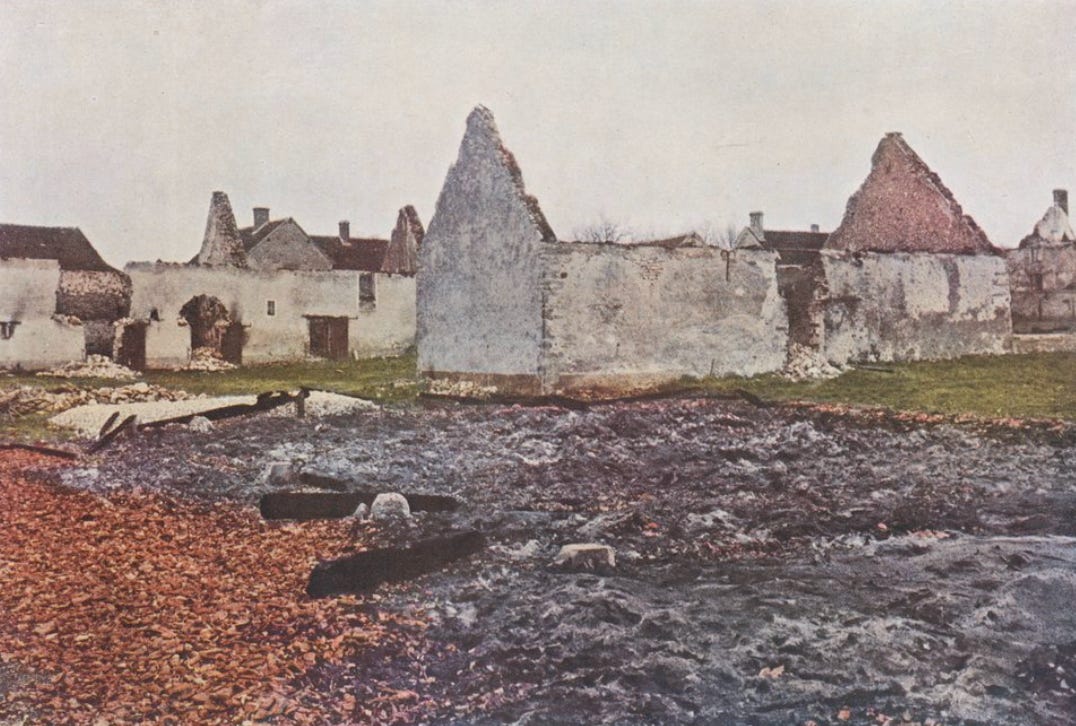Out Now!
Thursday saw publication of the latest history compilation by Iain Dale. Last year I contributed Queen Victoria’s biography to a new volume on Britain’s Kings and Queens. This year, it’s dictators, and my subject is Mustafa Kemal - Ataturk. It was a lot of fun to write up, and threw up interesting questions about whether the word “dictator” has to be negative in connotation?
Vanda Wilcox has tackles Mussolini in this one too, and there are 62 other write ups to give you a crash course in those who ruled supreme throughout history…
On the Road
This week saw the launch of a special exhibition at the Royal Logistics Corps museum on the outskirts of Winchester. Curator Samantha Jolley has gone out of her way to map the bumpy (lols) progress of the military and how they deal with pregnant personnel.
The exhibition starts with early accounts of women, childbirth and the army with some harrowing experiences from the Napoleonic Wars.
There’s some questionable fashion items on display, but even getting to the point where uniforms like this were available is complex.
There is lots of information about the progress, and sometimes lack of it in history, when it comes to accepting pregnancy as a scenario that needed to be dealt with in the military.
Sergeant Abbie Rymer is just one of the women whose stories are covered with the displays.
The exhibition is going to run for a year. You can visit the museum at:
Connaught Rd, Worthy Down, Kings Worthy, Winchester SO21 2RG. It is open Tuesday - Saturday, from 9:30am to 4:00pm, and features lots of permanent artefacts and exhibits too, including my favourite, a bread oven pilfered from Napoleon.
This Week
On Monday I marked the 110th anniversary of the Battle of the Marne by sharing some unique images from a little French booklet I found. It contains colour images of the battlefield, but uniquely, before any final clearance was done…
A depressing aspect of running away from the enemy is blowing up bridges as you go to slow them down. A priest at Germigny-l'Évêque described watching one night, miserable, as the British crossed bridges like this one, which linked the village to Vareddes to the north, in retreat. The booklet is very excited that the damage caused here was done by the Germans, as they fled back the other way.
Damage was done to property in a number of ways on the battlefield. In this image you can see ruins at Courtacon in the middle of the front. According to the book, the British retreated through it on 4th September, and when the Germans arrived on the 5th, they set about destroying it.
To read the complete article visit:
Then on Thursday I covered another “notable trial” in British history. This time, it was a blatantly murderous young socialite from Glasgow…
Tuesday 30th June, 1857, was a wet, miserable day in Glasgow. (Could be any day that ends in a y up there) Despite the weather, by 8:00am a crowd had built in Parliament Square, all of them desperate to get a spot in a courtroom to see the celebrity of the day. That celebrity was a 21-year-old local socialite accused of murder.
‘No criminal cause of modern times has more deeply absorbed the interest and attention of a whole empire; and day by day, during its nine days' progress, the public excitement, throughout Scotland in particular, was intensified, and the fate of the engaging and accomplished girl of one-and-twenty, whose life hung in the balance, formed the central if not the exclusive topic of current popular speculation.’
Madeleine Hamilton Smith was the daughter of a local architect and gentleman, and she was born into a life of privilege. The family lived in town in the winter, and decamped to a second house in the Scottish countryside during the summer. She was considered pretty, and she was an accomplished musician who had had money lavished on her education. She even spent some of her youth at a boarding school in Essex, which sounds like a punishment, but by all accounts it was money well spent, and the trial record lists her as popular, ‘affectionate, vivacious, and intelligent.’
It all started to go wrong in 1855, when she met a man ten years her senior…
Pierre Emile l’Angelier was originally from the Channel Islands, and I’ve seen him described as a lowly labourer, or a clerk for a Glasgow merchant. Either way, not someone she could take home to the family, as his station in life was decidedly below hers. They set about a secret relationship, but would frequently meet thanks to the help of friends, who would also pass correspondence back and forth. It was hot and heavy, but at some point, Smith realised that there was no future in it and that she might end up in trouble with her parents and tried to break it off. Pierre, however, was smitten. They broke it off for a while, but by the end of the year things were steamier than ever. Her parents did find out, and put a stop to it, but by the spring of 1856 they were back together and the relationship ‘had assumed a criminal aspect.’ I’m guessing that this means that boinking had commenced.
To find out who ended up dead and how, and to follow the explosive trail that then occurred, visit:
Next Week
Brace yourself for a piece on one aspect of the Battle of Britain, and a tale of British meddling in the American Civil War…




